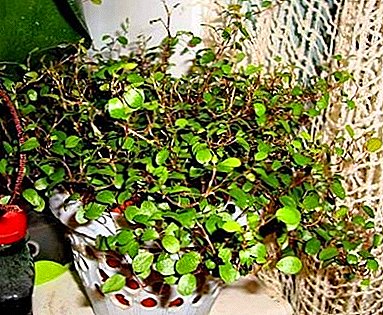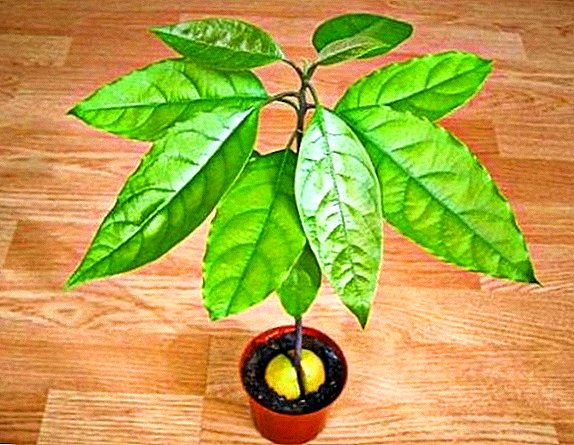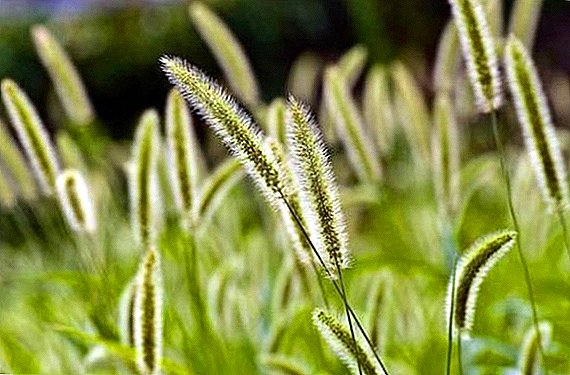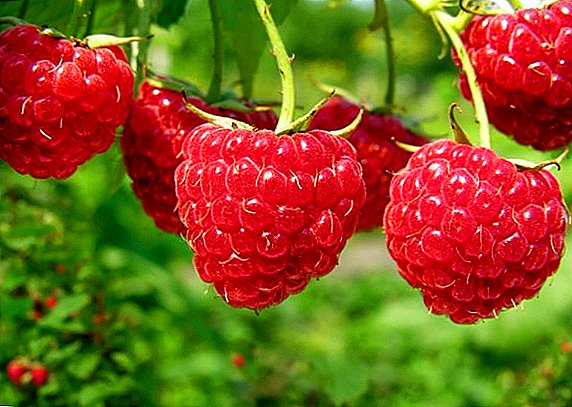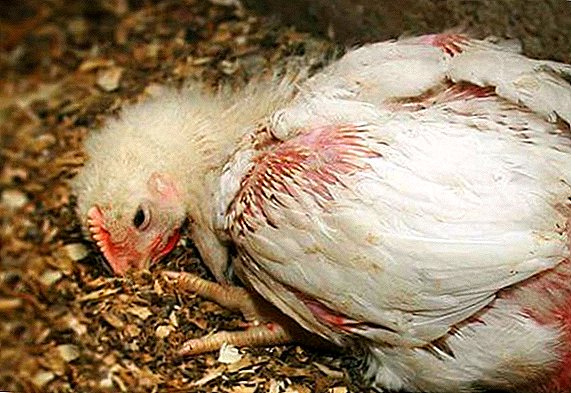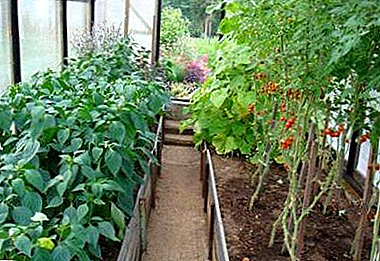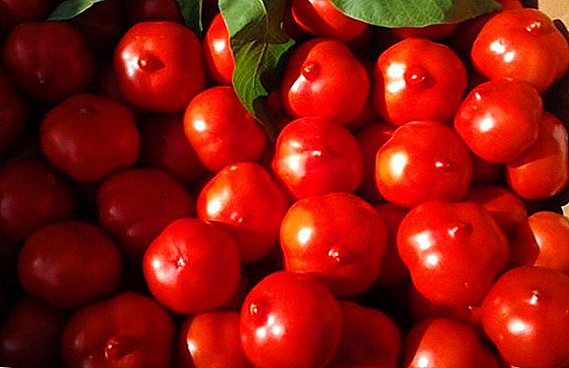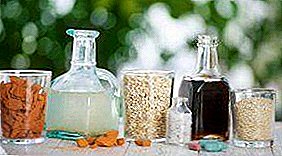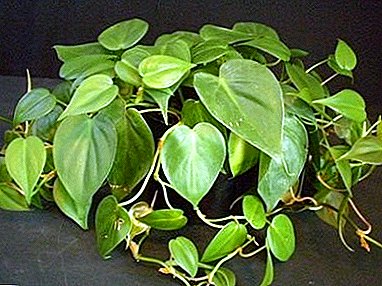
Philodendron is a wonderful evergreen.
For the full development of the flower you need: bright natural light, breathable soil, high humidity.
It responds well to abundant watering, spraying from a spray bottle and feeding.
General description of the plant
Philodendron is from the tropics. It was brought from Mexico or the southern part of the United States. It belongs to the Araceae family. It has about 400 subspecies. The variety of sizes, shapes and various colors is very large.
Therefore, this plant fits perfectly into any interior. Many subspecies have shortened branches and large leaves. Thanks to this, they look great alone. Other subspecies are creeping vines. As an emerald wall, they decorate arches and green corners.
Types and varieties of "Philodendron" with photos
Atom
The most complex and capricious subspecies. Compact. Refers to the subspecies of vines. It has luxurious curled leaves of emerald hue. On the leaves is 5 blades. At home, unpretentious. It grows very slowly. Latin name: Philodendron atom.
On the photo room flower "Philodendron Atom":

Scale-bearing
Actively grows in the USA. The first mention comes in 1845. Latin name: Philodendron squamiferum. Is an epiphyte. Refers to the subspecies of vines. On the ground is not found. It grows only in height, clinging to closely growing trees.
In room conditions, prefers to grow in a porous substrate. Juvenile leaflets elongated. Young plants are simple. As they grow, they become more complex in form. The number and depth of the shares increases. In adult specimens, the leaf plate has 5 asymmetrical blades. In length, the leaves reach 40-46 cm.
Chestnut burgundy shadecovered with small fibers. Creeping blanket of white-reddish hue. The inner side is completely white.
On the photo the indoor flower "Philodendron Scale-bearing":

Warty
The most popular subspecies. It has extraordinary beauty. Latin name: Philodendron verrucosum. Refers to evergreen vines. It has brittle stems. The leaves of the plant are velvet, in the form of hearts. In length reach more than 18 cm, in width - 8 cm.
Located on short stalks. In the wild, the length can reach 50 cm in width - 25-30 cm. The stems are covered with fibers. Cover amber shade. From the seamy side has a burgundy color. Great for decorating greenhouses. When dry air dies.
On the photo room flower "Philodendron Wart":

Elegant
Sometimes this plant is called "Skeleton" or "Narrow-cut". Latin name: Philodendron elegans. The first mention is in 1913. Actively grows in the tropics of Brazil and Colombia. The forming leaves have the form of a master key. Planted deep, look like rugged stripes.
In length, the leaves reach no more than 45-55 cm. Stamb with a large number of internodes, lianovidny. In length reaches 10-20 cm. Adult leaves are juvenile, asymmetrical. From each other may differ in shape, size and depth of irregularity.
2 inflorescences form in the leaf axil. Looks like an emerald veil. On the reverse side has a raspberry shade. In room conditions does not bloom. Prefers a porous substrate.
On the photo room flower "Philodendron Graceful":

Cobra
Hybrid Kaplenosnogo subspecies. Refers to variegated varieties. Very picky about lighting and high humidity. Latin name: P. guttiferum Cobra.
On the photo room flower "Philodendron Cobra":

Blushing
Active in Brazil, on the coasts of Colombia and Costa Rica. Latin name: Philodendron erubescens. The first mention falls on the year 1854. The name comes from the appearance of the flower.
Leaflets, branches and shtambe have a maroon and blood shade. The subspecies refers to the lianas. In the wild it grows up by 10-16 meters. Leaflets elongated, with a pointed end. In length reach 30-40 cm. The surface of the leaves is shiny, emerald. The bottom sheet plate has a reddish tint.
Unlike other subspecies, Blushing prefers shading.
On the photo the indoor flower "Philodendron Blushing":

Xanadu
It refers to the woody terrestrial subspecies. Latin name: Philodendron xanadu. It used to be that Australia was the birthplace of the plant. But it was recently confirmed that Brazil was the true homeland.
It grows well in the tropics with humid air. Leaf plate of the plant dissected. It can reach 1.0-1.5 meters. Abundant flowering. Flowers maroon-purple shade. In room conditions almost does not bloom. On the territory of the Russian Federation is sold with small elongated leaves.
The largest leaves reach 25-35 cm. The shape of the leaves oval, lobed. In room conditions, the plant is not whimsical. May grow in partial shade with arid air.
Tolerates a little dry ground. Full-fledged decorative leaves form only in bright natural light. Requires abundant regular watering.
On the photo room flower "Philodendron Xanadu":

Climbing
Latin name: Philodendron scandens. Refers to climbing liana. Climbs upward due to accessory branches and root system. The leaves of the plant are in the form of hearts, shrunken, with a solid edge.
Have an emerald or brown shade. In adult flowers in length can reach 11-15 cm. This representative flora can grow in partial shade. ABOUTrushing to fast-growing. Suitable for ampel cultivation.
On the photo room flower "Philodendron Lazyaschy":

Mediopikta
Sometimes the plant is called "Brasil". Latin name: Philodendron scandens f. mediopicta "Brazil". It is a hybrid Ivy subspecies. It has raznoperye leaves. The strips can be emerald or amber. As they grow older, it loses the decorativeness of the leaves. Adult specimens have only emerald green leaves.
On the photo room flower "Philodendron Mediapikta":

Jellyfish
It is a hybrid of the blushing subspecies. Refers to fast-growing varieties. Leaves amber shade. Chereshki and shtamb - burgundy. It grows well in bright natural light.
On the photo room flower "Philodendron Medusa":

Sello
It is an evergreen woody vine. Latin name: Philodendron selloum. The length reaches 1.0-1.5 meters. It has a sleek, glossy barrel. A distinctive feature is that the trunk has traces of fallen leaves. In length, the leaves reach 50-100 cm. Have more than 10 blades. Cut very deep. Edges with small curls.
On the photo room flower "Philodendron Sello":

Skandens
Latin name: Ph. scandens f. Micans. It has shiny leaves in the shape of a heart. In length, the leaves reach 9-16 cm. They are emerald in color. Young flowers have burgundy hue.
On the photo the indoor flower "Philodendron Skandens":

Important! Each subspecies has its own characteristics and conditions for growth. Therefore, for active growth, it is necessary to take into account the characteristics and preferences of each plant.
Home care
The video provides detailed instructions for the care of Philodendron at home:
Formation of the crown and support
 To form a crown, it is necessary to cut off dried branches and leaves.
To form a crown, it is necessary to cut off dried branches and leaves.
Many subspecies of this representative flora grow as evergreen vines. Therefore, such a plant must be securely supported.
You can use stakes, moss table, arcs, grilles, damp vertical wall.
Only when growing in an upright position, active growth and full development occurs. Undeveloped leaves will be replaced by adults, and the plant will look like decorative.
Watering
In the tropics, the rainfall season is replaced by drought. But in such climatic conditions the air always remains strongly humidified. Therefore, thanks to the air roots, this representative of the flora perfectly absorbs the necessary moisture.
Important! At home it is absolutely impossible to dry the land.
The flower can adapt to slight drying out of the soil. But the content in such conditions will affect the size of the sheet plates. Watering should be abundant and very frequent. Re-wetting should not be allowed. This will lead to rotting of the root system.
Planting and transplanting
 In the wild, this representative of the flora, depending on the subspecies, may be semi-epiphypitic or epiphytic.
In the wild, this representative of the flora, depending on the subspecies, may be semi-epiphypitic or epiphytic.
The root system in such plants abundantly absorbs air. Therefore, the flower can not grow in weighted earth. Under room conditions, the soil must pass oxygen and moisture. The main requirement for the ground - air permeability.
In stores it is impossible to buy a full-fledged porous earth, suitable for "Philodendrons". Therefore, the substrate must be prepared by yourself. For this we need black soil for orchids. It is made from tree bark, peat, charcoal and sphagnum. Such a substrate will occupy half the capacity.
The upper part should be occupied by soil based on peat and grass humus. Also, perlite, coarse-grained sea sand and leafy earth are added to the ground. Such a composition of the substrate provides excellent air access to the root system of the plant. The soil will easily pass through the water. The roots will remain wet for a long time.
Breeding
When growing in apartments, these plants do not bloom. Therefore, seed multiplication is impossible. For flowering plants require wild conditions or the atmosphere of the winter garden. To pollinate one instance of the subspecies will not be enough. Therefore, in the botanical gardens use pollinators or additional artificial intervention.
Tip! For reproduction using sprigs of vines. Planting material is chosen with 2-4 internodes.
They are put on a moist substrate. After 7-30 days, air roots appear from the internodes. Lateral stems will begin to grow from the sinuses of the leaflets. Rooting can also be done in a glass of water. Thanks to this procedure, the lateral stems will grow out of the trunk. But for subspecies of vines, this method will not work. After complete formation, the processes are planted in separate containers.
Detailed visual breeding instruction "Philodendron":
Temperature
 This representative of the flora brought from the tropics. Therefore, it absolutely does not tolerate temperature drops and strong cooling.
This representative of the flora brought from the tropics. Therefore, it absolutely does not tolerate temperature drops and strong cooling.
Even a short stay in the cold will lead to the death of a flower. Experienced growers recommend keeping the plant at a temperature of 17-24 ° C.
Do not allow the temperature to drop below 13 ° C. In hot weather, it is necessary to spray the plant with water from the sprayer.
This procedure will cool the boles and sheet plate. The most capricious subspecies suffering in arid air: Trifid, Andre, Golden black, Warty.
Lighting
In the tropics, "Philodendrons" begin their lives in more often forests. As they grow they direct upward to the sun's rays. Under room conditions, the flower can grow in partial shade. But lack of sun will affect poor leaf development.
They will begin to decrease greatly in size, and over time - to degrade greatly. Plants with undeveloped juvenile leaves are not considered decorative. Therefore, a pet needs to provide bright natural light.. Some subspecies, such as the Cyclopone, can tolerate direct sunlight.
- Syngonium;
- Dikhorizandra;
- Tetrastigma Vouinier;
- Duchenei Tutti Frutti;
- Ruellia;
- Setcreasia Violet (purple);
- Money Cards;
- Tolmia;
- Tunbergia;
- Tseropegiya Sandersona.
Diseases and pests
At home, the plant is not prone to pests. But in case of poor dust removal, a fine mite, mealybug or scale scum can appear.
To eliminate pests use a soap solution, a weak mixture of potassium permanganate or chemicals. To do this, the "Aktara", oil emulsion, "Agravertin", "Iskra-bio". Diseases occur only with improper care.
The video shows signs of defeat "Philodendron" shield:
Philodendron has more than 400 different subspecies. At home, has a smaller size than in the wild. It is not subject to wreckers. Requires good care. Loves bright natural light, top dressing and abundant watering.


